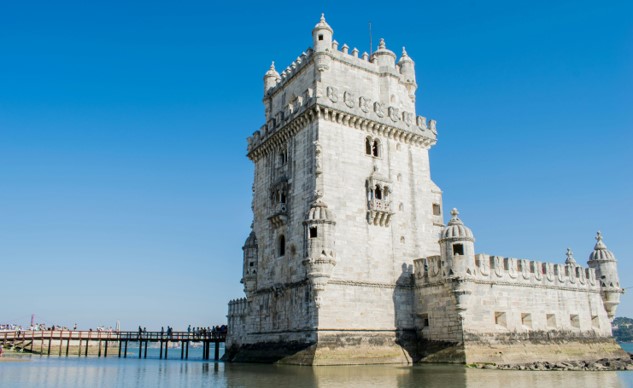Lisbon Favorites
Baixa (downtown Lisbon):
Baixa, or downtown Lisbon, is the heart of the city. It's the main shopping district that stretches from the riverfront to the main avenue (Avenida da Liberdade), with streets named according to the shopkeepers and craftsmen who traded in the area.
It was completely rebuilt after the 1755 Earthquake, with streets flanked by uniform, neoclassical buildings. This was Europe's first great example of neoclassical design and urban planning, and one of the finest European architectural achievements of the age.
It remains an imposing district, with elegant squares, pedestrianized streets, cafes, and shops. Old trams, street performers, tiled Art Deco shopfronts, and elaborately-decorated pastry shops all lend a special charm to the area.
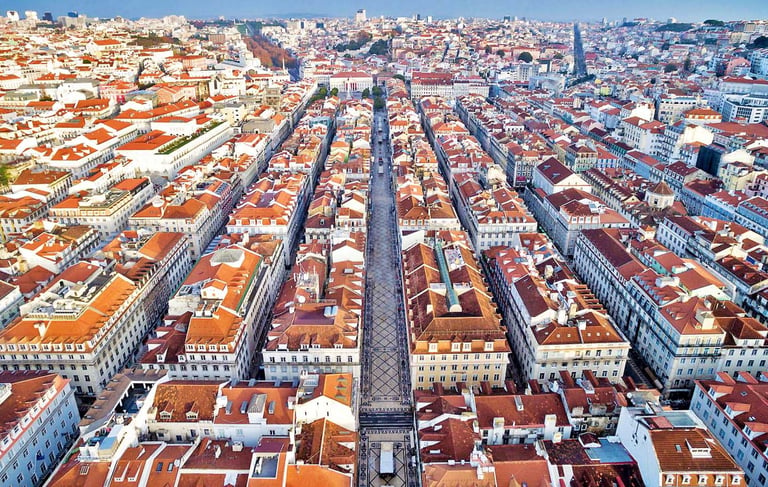

Praça do Comércio:
Also known by its older name Terreiro do Paço, is one of Lisbon's most iconic and historic landmarks:
Former Royal Palace: Originally, the site was occupied by the Ribeira Royal Palace, a residence of Portuguese kings for centuries.
The Great Earthquake: In 1755, the devastating Lisbon earthquake nearly destroyed the palace and much of the city.
Equestrian Statue of King José I: A tribute to the king who led Lisbon's reconstruction after the earthquake.
Rua Augusta Arch: An imposing triumphal arch marking the entrance to Rua Augusta, one of the city's main avenues.
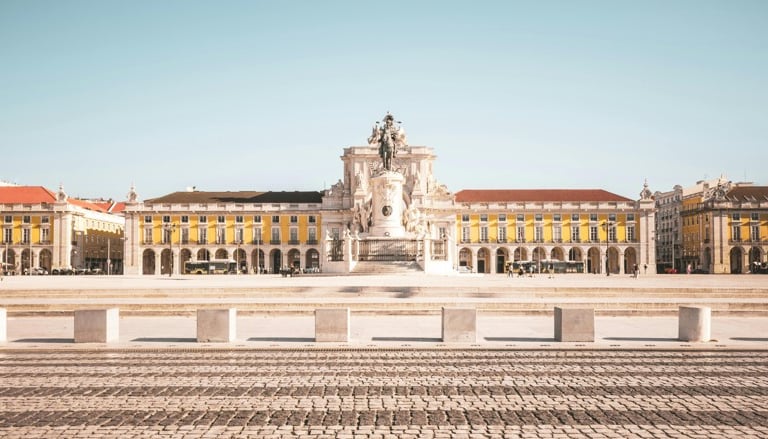

Lisbon Cathedral (Sé)
Officially known as the Cathedral of St. Mary Major, is one of the oldest and most important religious buildings in Lisbon:
Roman Foundations: The cathedral's origins date back to the Roman era when a temple stood on the site.
Moorish Mosque: After the Moors conquered Lisbon in the 8th century, the temple was converted into a mosque.
Christian Cathedral: Following the Christian reconquest of Lisbon in 1147, the mosque was transformed into a cathedral.
Gothic Architecture: The cathedral's Gothic architecture is evident in its tall, pointed arches and intricate stonework
Renaissance Additions: Over the centuries, Renaissance elements were added to the cathedral, such as the cloister and the Chapter House.
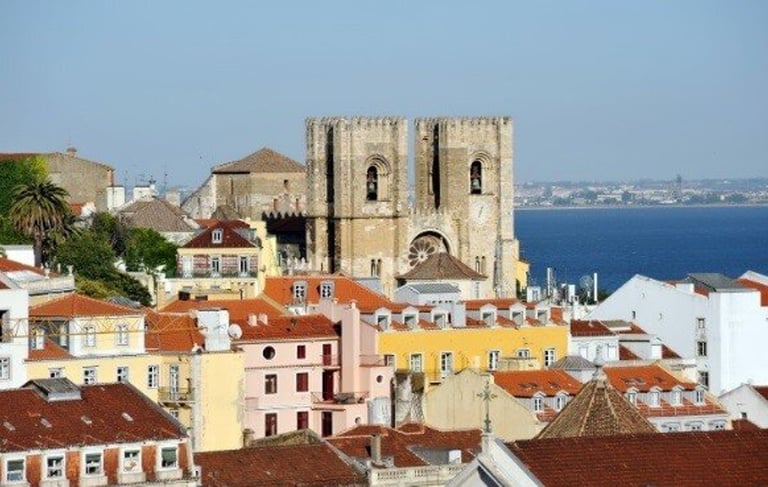

Campo das Cebolas:
Captivating square located in the heart of Lisbon, which translates to "Onion Field," as a remnant of its past as a market for vegetables:
Origins: Known as Ribeira Velha (Old Waterfront), the area was reclaimed from the river Tagus in the 16th century. It served as a shipyard and a bustling commercial hub.
Slave Market: During the 17th century, Campo das Cebolas became a notorious slave market.
Rebuilding: The devastating earthquake of 1755 struck Lisbon, leaving Campo das Cebolas in ruins. The area was later rebuilt in the Pombaline style.
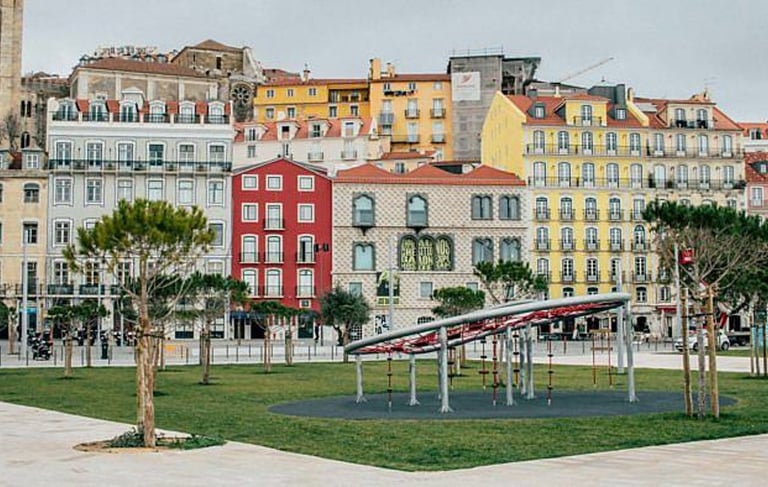

Alfama:
Alfama is one of Lisbon's oldest and most charming neighbourhoods, nestled on the city's eastern hill overlooking the Tagus River, known for its labyrinthine streets and colourful buildings. The neighborhood's intimate atmosphere and traditional taverns have long been popular venues for fado performances.
Moorish Settlement: Alfama's history dates back to the 8th century when the Moors established a settlement on the hill. The name "Alfama" is believed to be derived from the Arabic word "al-hamma," meaning "hot springs."
Medieval Quarter: After the Christian reconquest of Lisbon in 1147, Alfama became a thriving medieval quarter. Its narrow streets and defensive walls provided protection from invaders
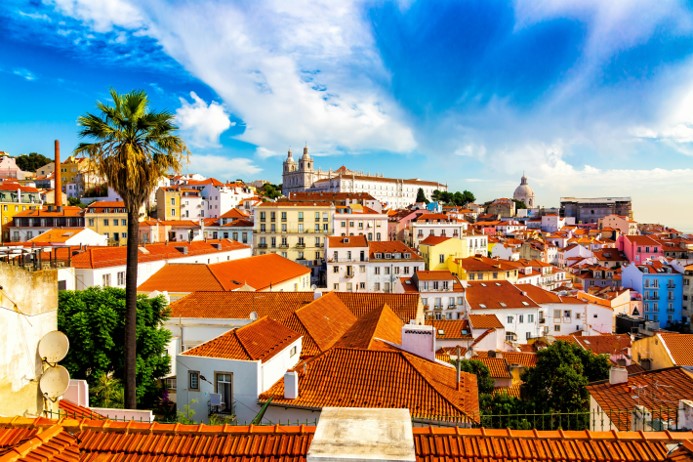

Chiado:
Chiado is an important cultural and commercial district, known for its luxury shopping, historic landmarks, and its numerous theatres and museums.
The 1755 earthquake greatly affected the area, destroying houses, churches and convents.
In the 18th and 19th century, a great number of important commercial establishments opened in the Chiado, turning it into a favourite shopping area. Some of them exist to this day, like the "Bertrand Bookshop" (opened 1747) and "Paris em Lisboa" (garment shop opened 1888).
In 1988, the Chiado area was severely affected by a fire. Following an extensive rehabilitation project by Pritzker-winning architect Álvaro Siza Vieira, Chiado has recovered.
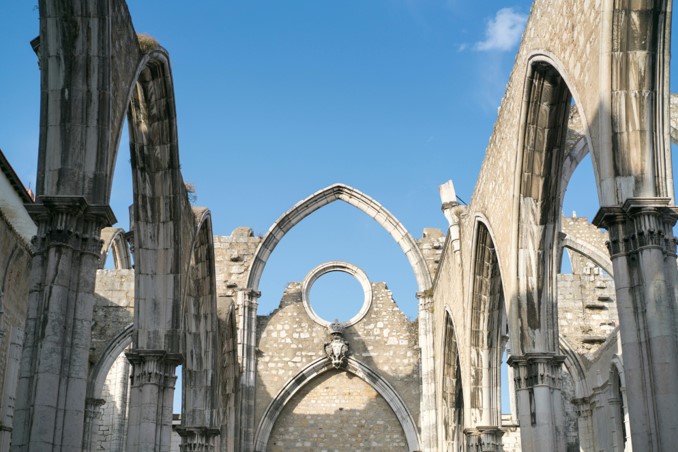

Belém:
Belem was the location of Lisbon’s shipyards and docks where the 15th-century voyages that discovered the sea routes to India, Africa and Brazil started.
Belem hosts some extravagant buildings that were funded by the vast wealth that flowed into Portugal from the newly discovered colonies, including the Mosteiro dos Jerónimos, Belém Tower and Padrão dos Descobrimentos.
A must-visit is the famous Fábrica Pastéis de Belém where the famous Pastel de Nata custard tart was created over 150 years ago. The exact Pastel de Belém recipe is a closely guarded secret and all other imitations are referred to as Pastel de Nata.
